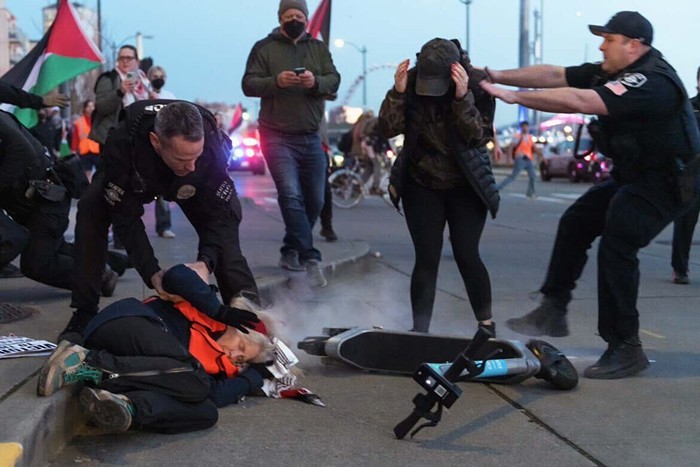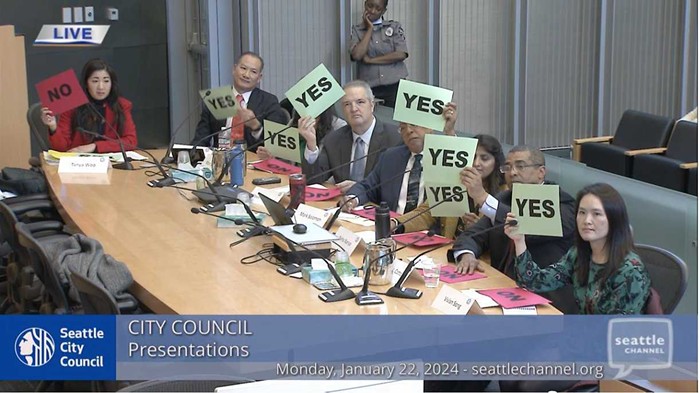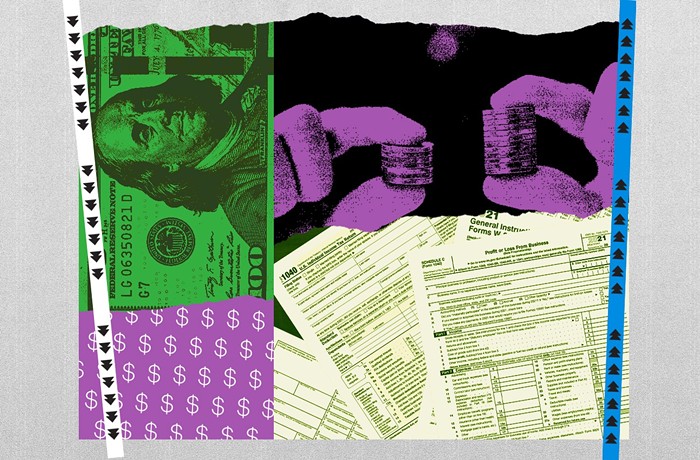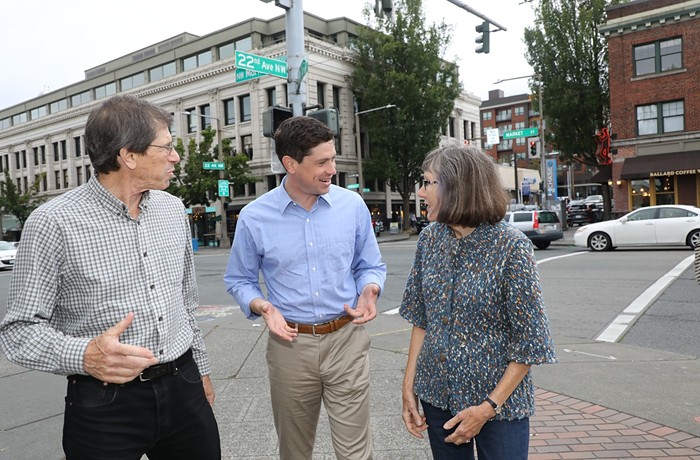
- Office of Governor Jay Inslee
- Governor Jay Inslee wants the state's biggest polluters to pay.
California did it. So did nine states on the opposite coast. Now, Governor Jay Inslee has a plan to make Washington State's worst polluters pay for their carbon emissions.
It’s about damn time. Yesterday, surrounded by Democratic legislators and reporters packed into a meeting room at REI’s downtown flagship store, Inslee outlined an ambitious set of climate proposals, including a cap-and-trade bill that would make the state’s top 130 polluters pay an “allowance” for every metric ton of carbon dioxide emitted. The governor, who recounted a quick story about his family’s heirloom ice pick before launching into details of the plan, said that the bill would create $1 billion in annual revenue for “transportation, education, and disadvantaged communities.”
Inslee’s “Carbon Pollution Accountability” bill follows up on an unfulfilled legal promise made in 2008. Back then, former governor Christine Gregoire signed a law mandating that Washington’s carbon dioxide emissions time-travel back to 1990. Under the law, Washington would have to decrease its emissions to 1990 levels by 2020, then reduce them by another 25 percent by 2035, and slice off 50 percent by 2050. For six years, that promise was left hanging in the wind. Inslee’s advisors now say that they’re confident the cap-and-trade bill—plus another proposed clean fuel standard—could get us there on time.
A quick rundown of how it works: In 2016, the Department of Ecology sets a limit on the number of allowances the state will issue that year. The state’s top 130 worst polluters (think oil refineries, pulp and paper plants, and aluminum manufacturers) then attend auctions for those allowances. In three years, emitters have to turn the allowances they’ve purchased over to the state, and their number of turned-in allowances is supposed to match up with every metric ton of carbon dioxide they’ve let loose during those three years. Over time, the state decreases the number of allowances it makes available. And in theory, over time those 130 firms will have had to cut down on their total emissions anyway.
Transportation makes up a major source of Washington State’s greenhouse gas emissions—nearly half. To address that issue directly, the governor announced that he had instructed the Department of Ecology to start drafting a clean fuel standard for cars, which would decrease carbon pollution from tailpipes. Republican state legislators have been worried that Inslee would go ahead and issue an executive action to create a clean fuel standard without their input, but yesterday the governor said he’d be waiting on their feedback.
Inslee's anticipating quite a bit of resistance from the fossil fuel lobby, too.
"We recognize that there will be alarmist attacks toward this plan," Inslee said. "And we should not be surprised by that. We have seen this movie before. Corporate polluters have launched aggressive campaigns against similar efforts in other states."
The governor said he hopes that legislators on both sides of the aisle see his plan as an opportunity to fill some crucial gaps in funding for education. Earlier this year, the Washington State Supreme Court found the state legislature in contempt of court for failing to fund public schools. A projected $380 million from cap-and-trade revenue would go toward various K-12 and higher education initiatives to address the high court's McCleary decision.
The project also directs a significant chunk of money to low-income families. The governor said that 20 percent of cap-and-trade revenue would be funneled into low-income communities by funding the Working Families Tax Rebate (as recommended in a Stranger guest editorial earlier this month) and a slew of other social justice initiatives.
In addition, the plan dictates that $400 million in projected revenue would pay for transportation projects throughout the state. Some of that would go toward improving bridges and highways, adding bike lanes, and creating electric vehicle charging infrastructure. Another $60 million would be set aside as a "clean energy fund" for businesses, academic institutions, and utilities to develop new low-carbon strategies. Inslee also asked the Department of Ecology to get cracking on a statewide zero-emission-vehicle program to subsidize electric or hydrogen fuel cell cars.
And yet, all this transportation goodness might sound incongruous with some of the proposals Inslee announced on Tuesday as part of his "Let's Move Forward" plan, which outlines several highway projects. The announcement also arrives a day after WSDOT ordered contractors to keep digging up Bertha, the enormous, problematic drill intended to create an underground alternative to the Alaskan Way Viaduct—a project some critics see as an environmental setback, and an unnecessary one at that.
Inslee's team doesn't see the conflict in funding highways with money from a tax meant to help prevent climate change. The Stranger was told that none of the cap-and-trade revenue would go toward new or expanding highways—only to completing older commitments. "I dont think it's contradictory in any way," Inslee's executive communications director David Postman said.


















